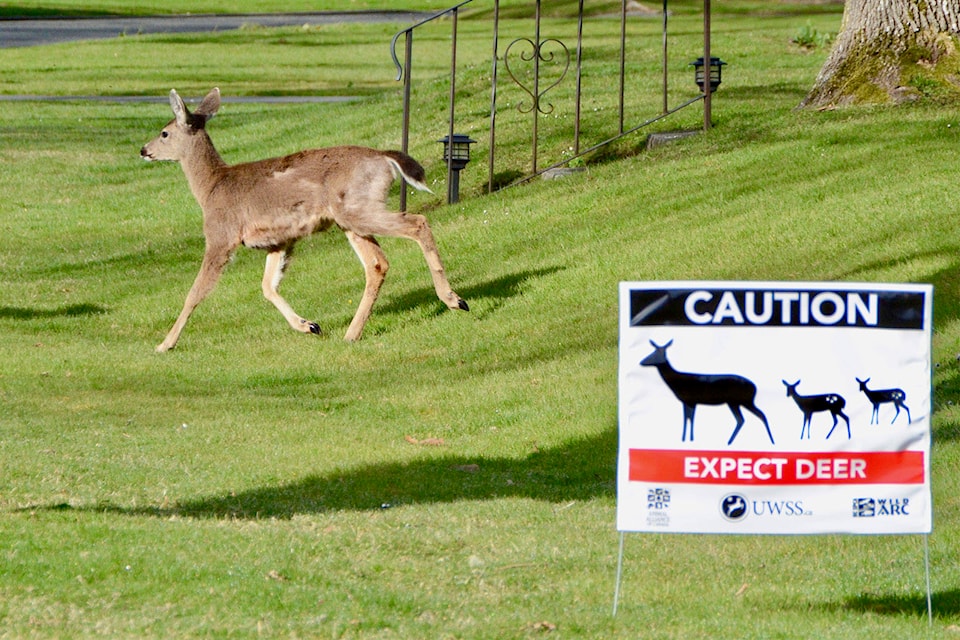A deer rescued by CFB Esquimalt firefighters Dec. 27 had to be euthanized.
“Typically we don’t admit adults because we can’t take care of them. They end up injuring themselves further when they’re contained,” said Christina Carrieres, a Wildlife Rehabilitator with Wild ARC. “The fact that she was able to be captured is because she was in shock at that point.”
READ MORE: Dogs scarier than deer: Andrew Weaver
The deer was found trapped between a fence post and a building.
“While she was stuck she was trying to get away from it. Instead of using her hoof as she was standing and trying to get forward, she was down on the equivalent of her wrist,” explained Carrieres. “By scratching the ground like that she ripped the skin, the muscle and even ruptured some ligaments as well, and the bones were exposed. One of the two legs wasn’t quite as bad as the other one, but the one was really bad. She probably would not have had use of that leg anymore.”
Carrieres did note that crews on scene did everything right considering the circumstances. Even if the doe was rescued sooner, the stress caused by getting stuck could have killed her later on.
“They’re susceptible to a condition called capture myopathy, which is a condition that animals – especially prey species – are susceptible to,” Carrieres said. “What happens is the equivalent of when we work out too much and then there’s build up of lactic acid in the muscles so we’re really stiff next few days. That’s because the muscle cells have been dying. For a prey species that’s suffering from capture myopathy, that process doesn’t stop.”
READ MORE: Conservation officer frees B.C. deer from flotation gear mishap
Even when they appear fine, getting stuck in the first place can be fatal to deer. With increased urban fencing, Carrieres said that’s becoming more common in the region. Carrieres said it might be best to consider calling conservation officers first if a distressed deer is spotted. Officers could sedate the deer, keeping both the animal and humans safe until the best course of action is decided. When deer are rescued, typically younger deer have a higher likelihood of being successfully treated and released.
“Sometimes even placing a blanket over them so that they can’t see what’s going on around them, it kind of calms them down a little bit until we can get there and figure out what to do next,” Carrieres said.
Jesse Laufer [9:37 AM]
jesse.laufer@oakbaynews.com
Like us on Facebook and follow us on Twitter
